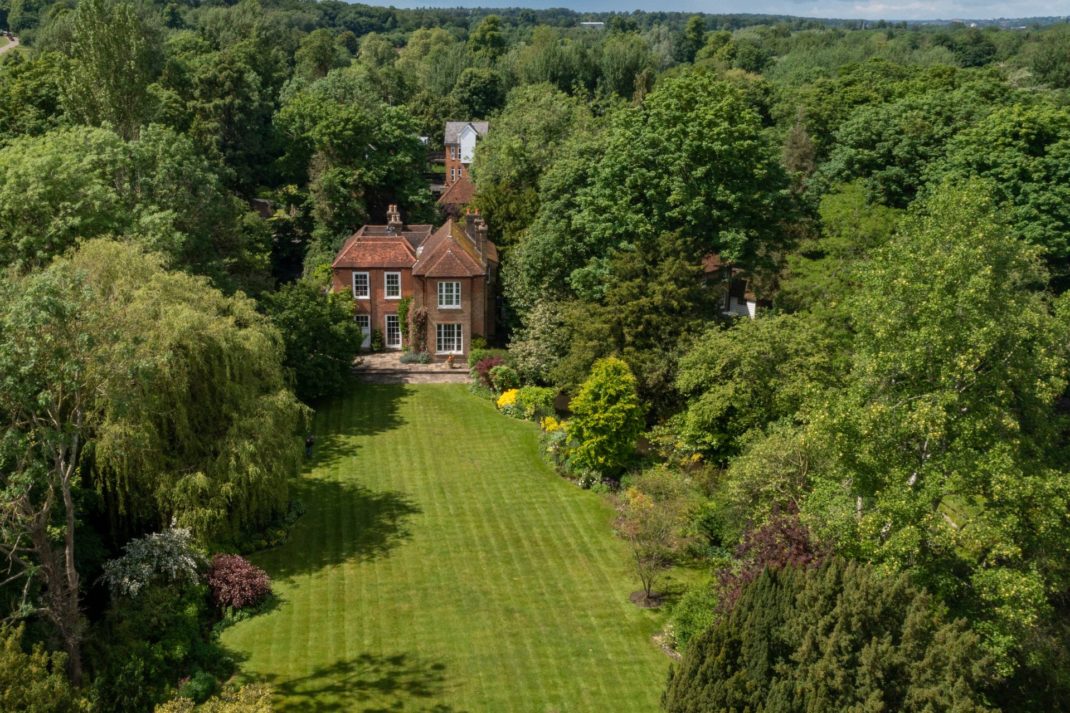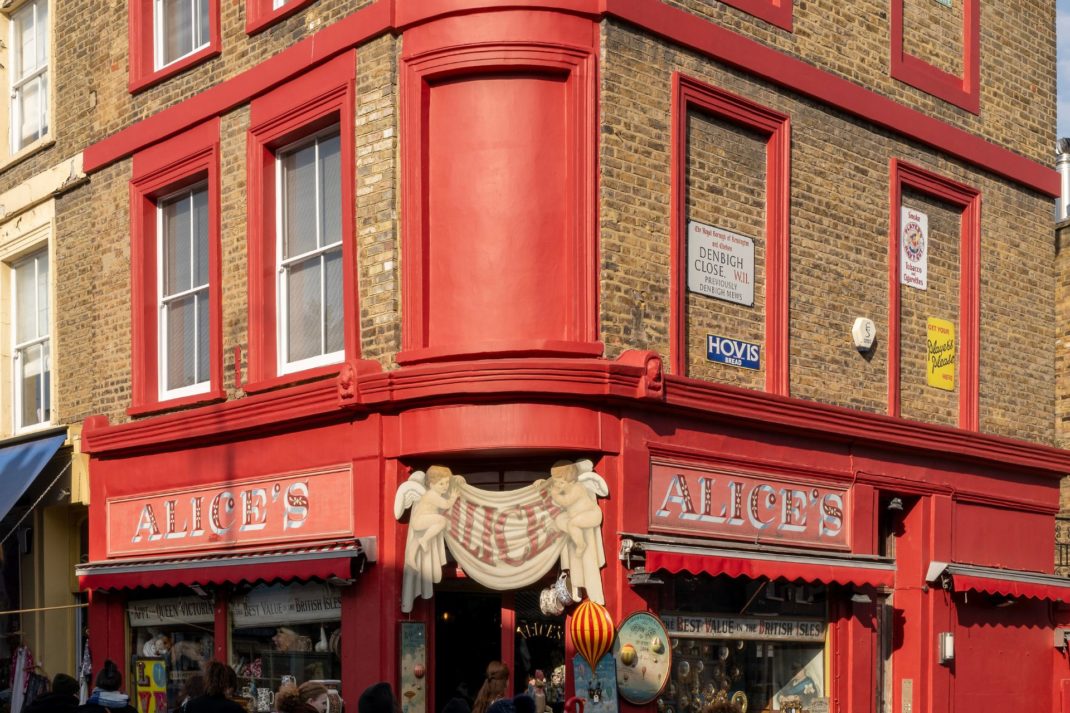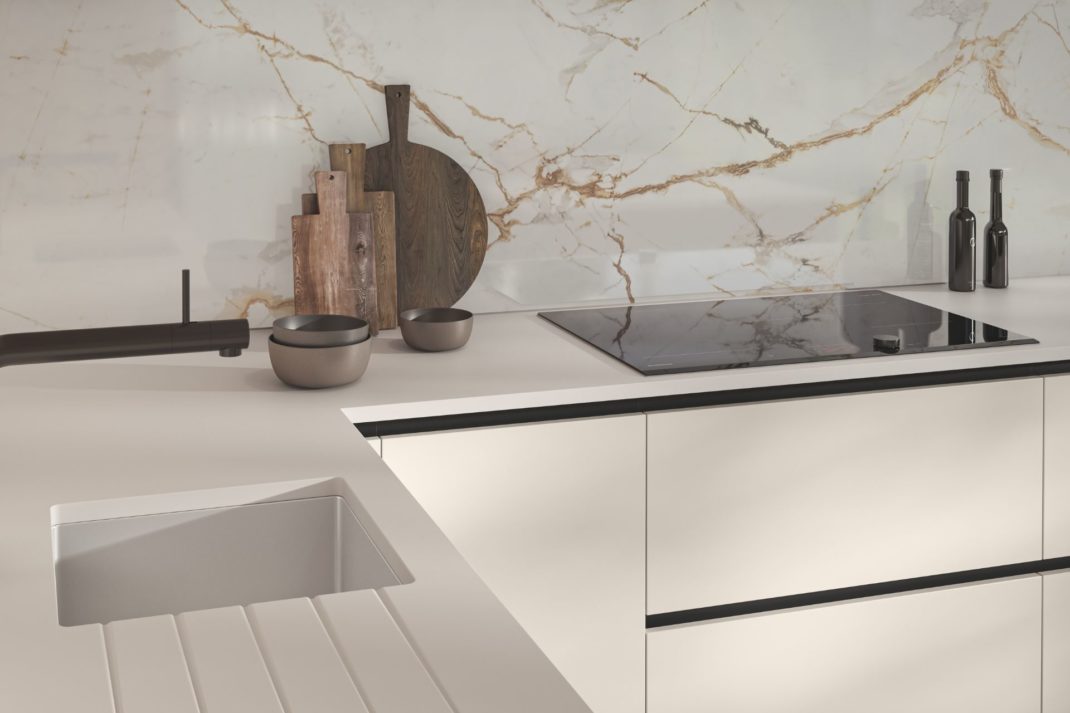How To Make Your House More Eco-Friendly – An Expert’s Advice
By
4 years ago
From solar tiles to smart meters, here's how to build a sustainable home
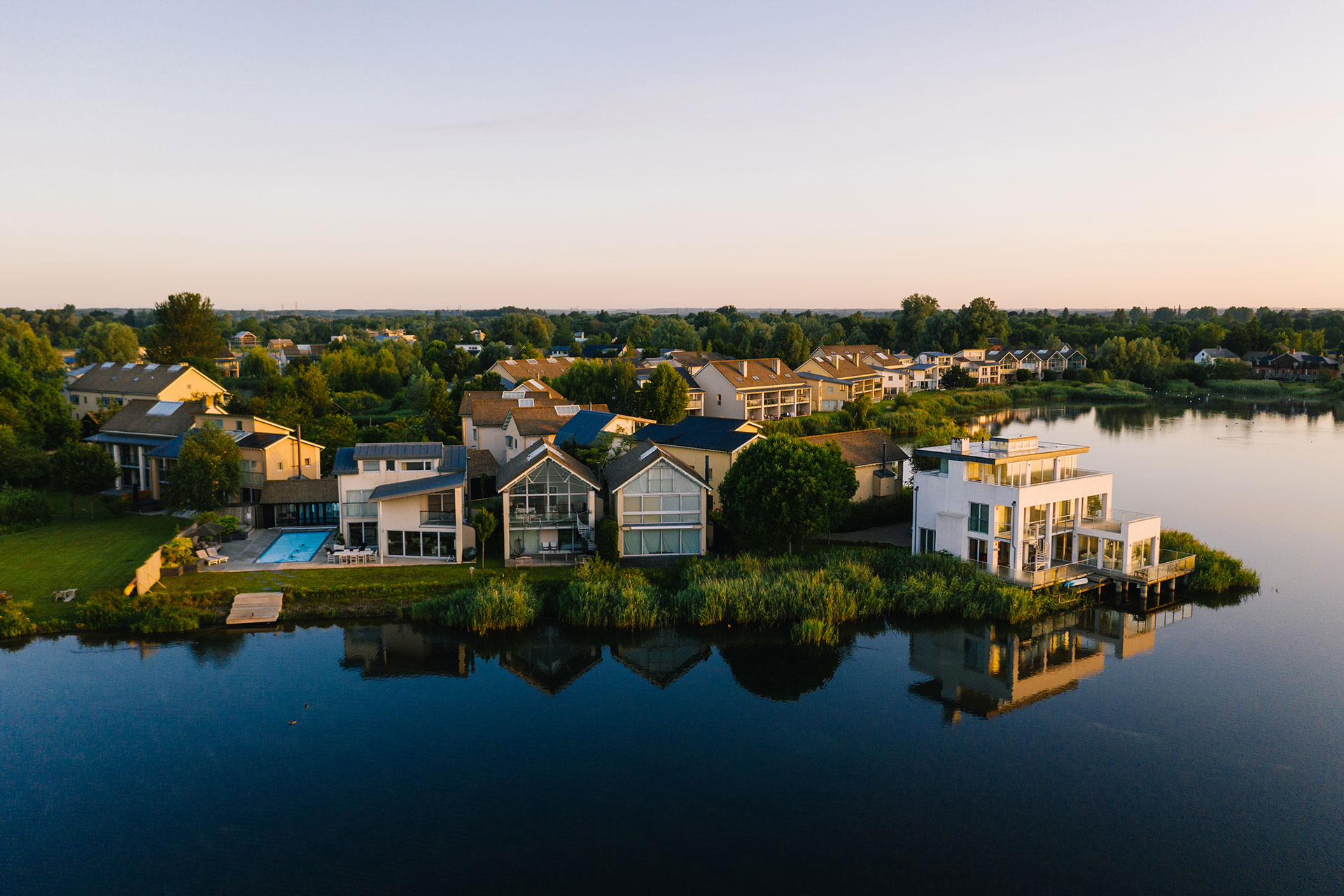
With the declaration of a ‘code red for humanity’ and the climate crisis more visible than ever, helping the planet has never been more important. And because we’re spending more time than ever at home, home is the best place for us to start making a change.
Habitat First Group’s pioneering sustainable houses have been pushing the boundaries of architecture and ecology for years. We asked Nigel Mears – who’s working with Habitat to create their first net zero carbon homes – for some advice on going green. So whether you’re looking to remodel for sustainability or just make a quick changes to cut your energy bills, here are some top tips on how to make your home more eco-friendly.
Go Solar
“Using solar panels for energy consumption is one of the key elements that makes a house sustainable,” says Nigel. These photo-voltaic panels (which convert sunlight into renewable energy) may have been around for a while, but their large and cumbersome appearance has often put people off. Thankfully, a new range of innovations are making it possible to harness the power of the sun without turning your roof into an eyesore.
“Solar tiles are a great option – the new Tesla ones in particular look very smart,” suggests Nigel. These sleek tiles are an eco-alternative to modern roofing, and while they certainly aren’t a cheap option – retiling a single story house could cost anywhere between £30,000 and £60,000) – they are guaranteed to help the planet without harming your house’s appearance. Plus, they’ll save you money on future energy bills – which makes that eyewatering installation fee a little easier to swallow.
Nigel also suggests recessed solar trays. “The panels fit into a tray and the edge is tiled. These mean that the solar panels don’t stand out as much as the ones that sit on top of the roof.” At around £7,000, these are a much more affordable option. And the savings you’ll make – estimated at around £20,000 over 20 years – is sure to brighten your day.
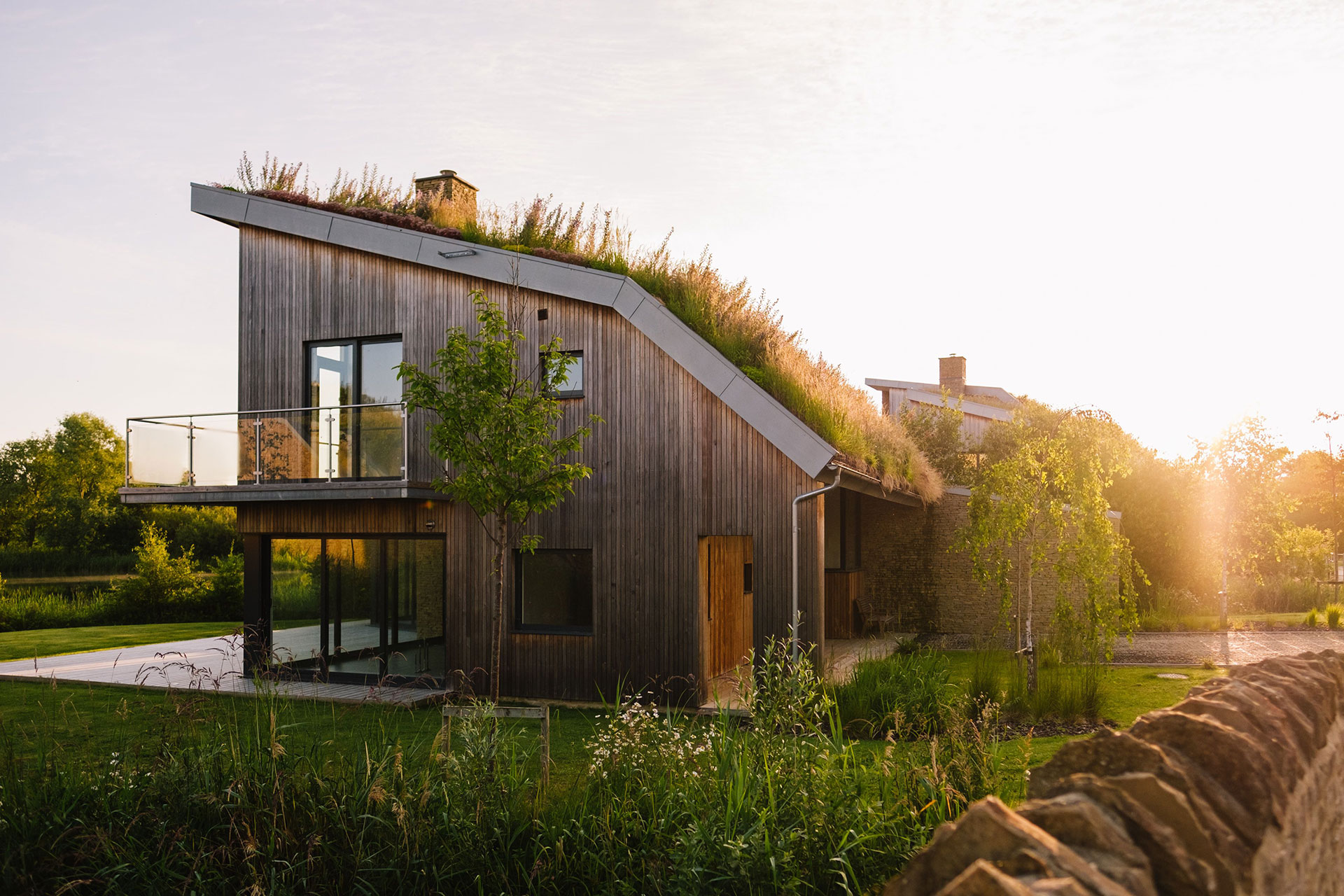
Sustainable house using a green roof for carbon-offsetting insulation at Habitat First Group’s Lower Mill Estate Development
Insulate, Insulate, Insulate
A 2019 report estimated that 14% of UK greenhouse gases come from our central heating. That’s almost the same level of emissions as come from cars, meaning there’s no point swapping to an electric vehicle or cycling to work if you aren’t going to address how you use energy at home.
According to Nigel, the easiest way to reduce your central heating usage is air tightness and insulation. There’s a myriad ways to do this, from double glazed windows to thatched roofs, but the best ones are those that make use of natural materials. “Wood fibre insulation is a good option as they lock in the carbon, so if you are looking to build a carbon neutral house they offer a negative embodied carbon element,” says Nigel.
Invest in an Air Source Heat Pump
“The green material we’re going to see more of is Air Source Heat Pumps” says Nigel. “Building regulations could make them mandatory in new dwellings from 2025.” So what is an Air Source Heat Pump – or ASHP – and why does it make your home so much greener?
It’s estimated that over 80% of British homes are still reliant on fossil fuel guzzling gas boilers and heating systems to heat their homes. An ASHP is a simple, renewable alternative to traditional central heating that uses heat absorbed from the outside air to warm your house and hot water. They do require electricity to run, but their heat output far outways this input. Plus, there’s no danger of them cutting out when the temperature dips (as it tends to do in the UK) because they can still extract heat from air as cold as -15°C.
“An air source heat pump combined with under floor heating is a fantastic addition to the house,” says Nigel. Meanwhile, for people with big gardens, Nigel a ground source heat pump, draws heat from the earth instead of the air. “A ground source heat pump is the most efficient but the most costly. And Air Source Heat Pump will cost around £11,000, while a ground source is approximately £35,000 to install.”
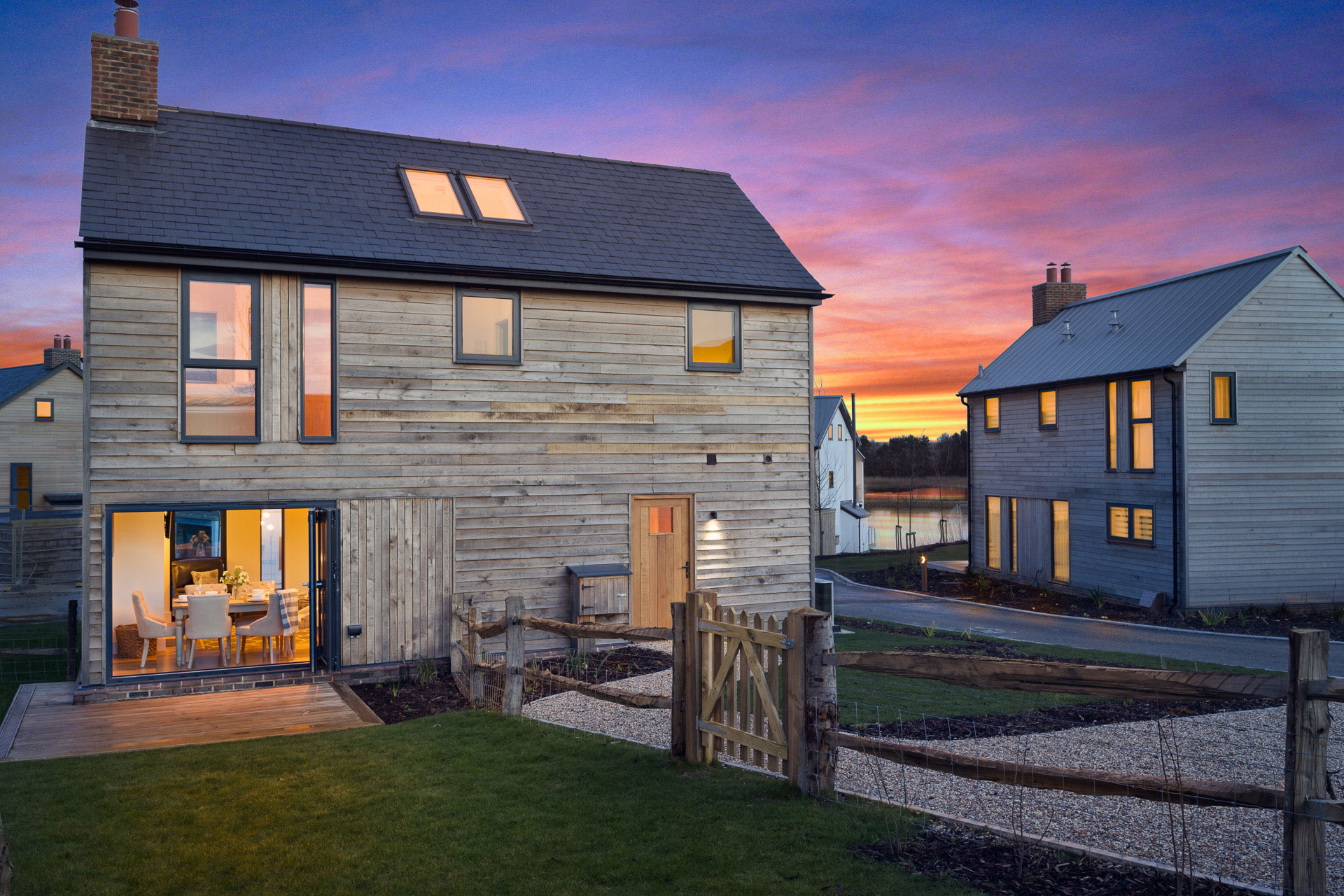
Sustainable home at Habitat First Group’s Silverlake development
Avoid Open Plan Layouts
Although they maximise natural light and cut down on energy bills, open plan layouts are actually a less sustainable option. When it comes to central heating – by far a bigger energy drain that lighting – warming up a vast open space will guzzle fuel much faster than warming up small individual rooms.
“Underfloor heating can be zoned to individual rooms and temperatures dialled down to rooms that are not occupied,” says Nigel. “Therefore from an energy efficiency perspective non-open plan layouts are better.” So if you’re remodelling your home and want to make it more sustainable, go for smaller enclosed spaces instead of big adjoining rooms.
Be Mindful Of the Little Things
If you can’t afford a complete remodel, don’t worry – there are still plenty of ways to make your house more eco-friendly. According to Nigel, often it’s addressing the little things that will make the big difference.
“A quick fix anyone can do is turn the central heating thermostat down – a daily ritual of all dads over winter,” says Nigel. “Also, fix dripping pipes, particularly hot taps, and install LED light bulbs.”
Above all, be mindful of how much energy you are using. Smart Meters are an easy way of keeping track and improving your awareness of energy consumption. And with the government hoping to offer every household in England, Scotland and Wales a smart meter at no up front cost over the next few years, they could soon be a totally free way of reducing your home’s footprint. You can check with your energy supplier to see if they’re being rolled out in your area or – if you’re worried about the looming winter – get one installed privately.
For more information about Habitat First Group properties, head to their website habitatfirstgroup.com
Featured Image: Sustainable houses at Habitat First Group’s Lower Mill Estate Development.
More:
The Best Eco-Homes on the Market Right Now / Easy Ways To Make Your Home More Sustainable

